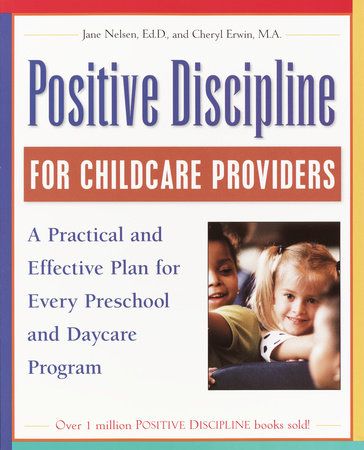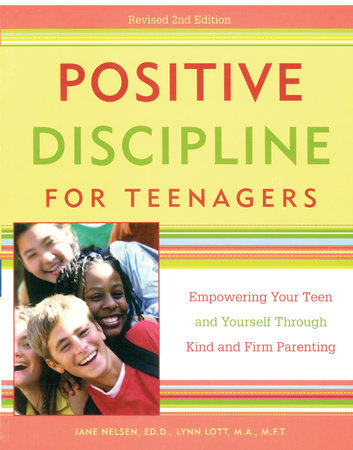From Teacher to Parent:
Positive Discipline Tools That Work
by Jane Nelsen, Ed.D. & Kelly Gfroerer, Ph.D.
We hear it all the time: A major stressor for teachers and parents is how to handle discipline both at home and in the classroom. The Positive Discipline approach provides a model that takes everyday challenges (or misbehaviors) and turns these trying moments into opportunities to teach children the important life skills they’ll need to be successful in the long-term. This approach makes discipline encouraging and helpful instead of discouraging and stressful. Teachers from around the world have shared with us how Positive Discipline Tools have saved them time and stress. We’re delighted to share some of the Positive Discipline Tools that these wise educators have found most helpful, in the hopes you might find them useful as well.
First, it is important to avoid reward and punishment systems as a response to a child’s behavior. For example, rewarding children for reading books by using stickers or other prizes can negatively impact a child’s intrinsic motivation to read on their own, and may harm a child’s budding love of reading for enjoyment. Punishing children for not completing a reading assignment can also be damaging over time. While these approaches may help in the moment, they miss the opportunity to teach a life skill that will help kids develop self-control and intrinsic motivation for the long haul. Research has shown that there are many well-documented negative effects of punishment, including long-term beliefs and behaviors that can result in what we call the “Four R’s of Punishment”:
Resentment: “This is unfair. I can’t trust adults.”
Rebellion: “I’ll do just the opposite to prove I don’t have to do it their way.”
Revenge: “They are winning now, but I’ll get even.”
Retreat: This can come in the form of sneakiness (“I won’t get caught next time.”) or reduced self-esteem (“I am a bad person.”).
Some people assume if there’s no punishment, then Positive Discipline must be permissive — but Positive Discipline doesn’t promote permissiveness or pampering. In fact, Positive Discipline tools help teachers and parents avoid both. Instead, kids learn how to make meaningful contributions to their environments. Positive Discipline tools such as Family Chores and Classroom Jobs focus on children contributing in meaningful ways. They help children learn the value of contribution and foster their natural inclination to help.
Positive Discipline tools are both kind and firm, which provides kids freedom with limits and the necessary structure and routine they need to learn critical thinking, decision-making, and problem-solving skills. Positive Discipline teaches the skills needed to focus on solutions. Kids learn effective interpersonal skills through working together to solve problems. One of the foundational tools of Positive Discipline is the idea of “Connection Before Correction.” When people feel connected and calm, it is easier to brainstorm solutions and work together to solve problems. Connection before correction is the best way to encourage behavior change. Here are a few examples of how this works:
Connection: Validate feelings: “I see you are frustrated and angry.”
Correction: “It is okay to feel what you feel, but it is not okay to kick. What else could you do?”
Connection: Verbalize caring: “I care about what you have to say.”
Correction: “Let’s find time to sit together and brainstorm solutions that are respectful to everyone.”
Class Meetings and Family Meetings are the best ways to help kids achieve a sense of overall connection (belonging), contribute, and practice problem-solving. Kids and adults place concerns on the meeting agenda, then everyone works through the issues together to find long-term solutions. Positive Discipline provides a specific meeting format that helps kids learn by being involved in brainstorming and discussing possible solutions to try. Through this process, kids learn listening skills, mutual respect, concern for others, accountability, and how to learn from their mistakes.
Another favorite Positive Discipline tool is “Asking Curiosity Questions.” Educators and parents are encouraged to avoid commands (telling) that invite children’s resistance and rebellion, and instead ask questions that invite feelings of capability and cooperation. Simple motivation questions like these invite kids to search for solutions:
What is your plan for finishing your homework?
What do you need to wear so you won’t be cold outside during recess?
How can you and your brother solve this problem together?
In our family meeting, what did we decide to do when this happens?
What is your plan for getting your room in order before bed?
The root of education is educare, which means to draw forth. When adults teach by drawing forth, kids feel capable, connected, and encouraged. Positive Discipline tools help develop these and many other important life skills that help students stick with difficult long-term tasks, like learning to read. Positive Discipline helps develop respect and responsibility in homes and at school.
To learn more about Positive Discipline Tools for Parents and Teachers, go to www.positivedisciplinetools.com.
-
Books in the Positive Discipline Series
-
Positive Discipline Tools for Teachers
Also available from:Positive Discipline Parenting Tools
Also available from:Positive Discipline: The First Three Years
Also available from: -
Positive Time-Out
Also available from:Positive Discipline: A Teacher's A-Z Guide
Also available from:








